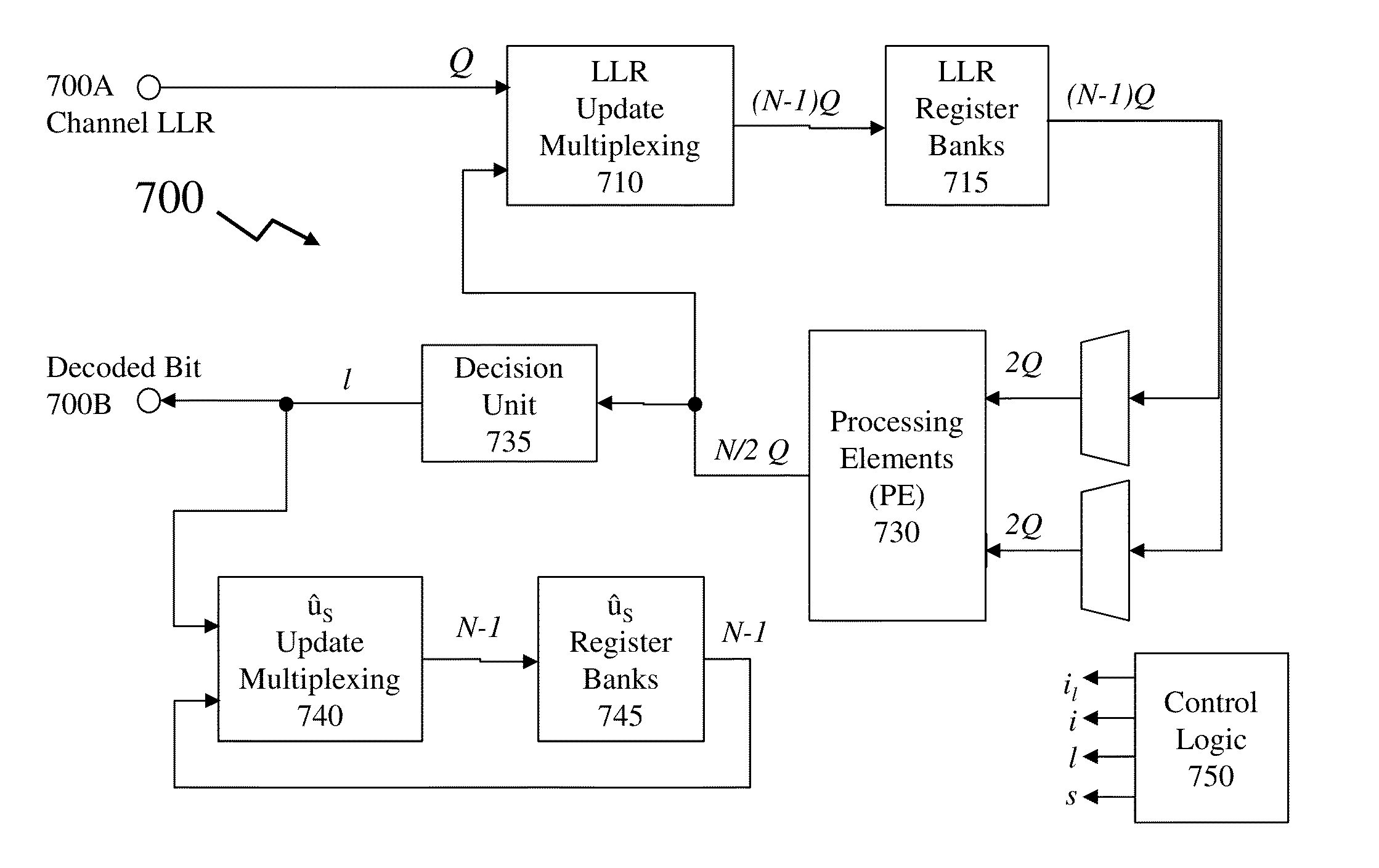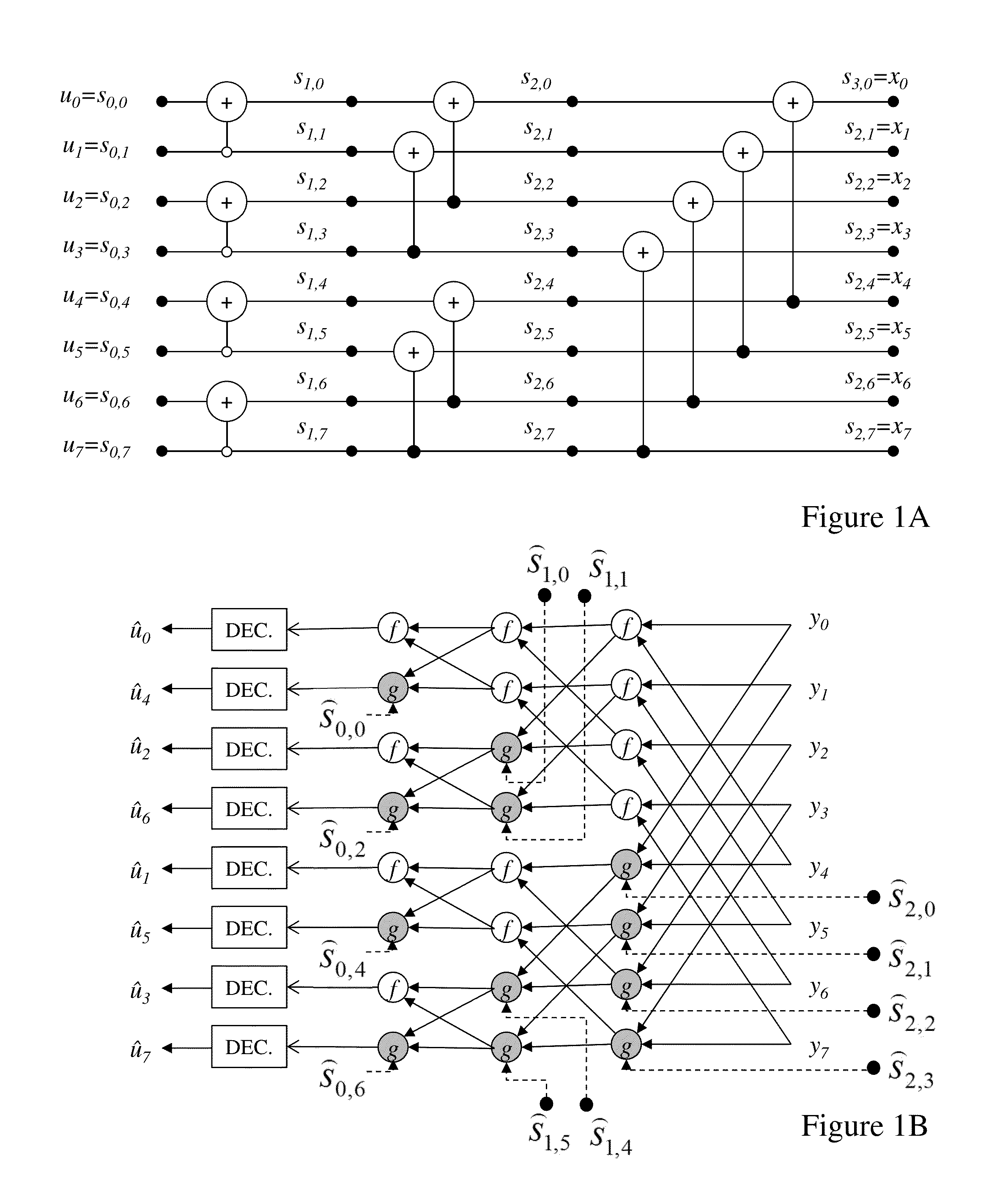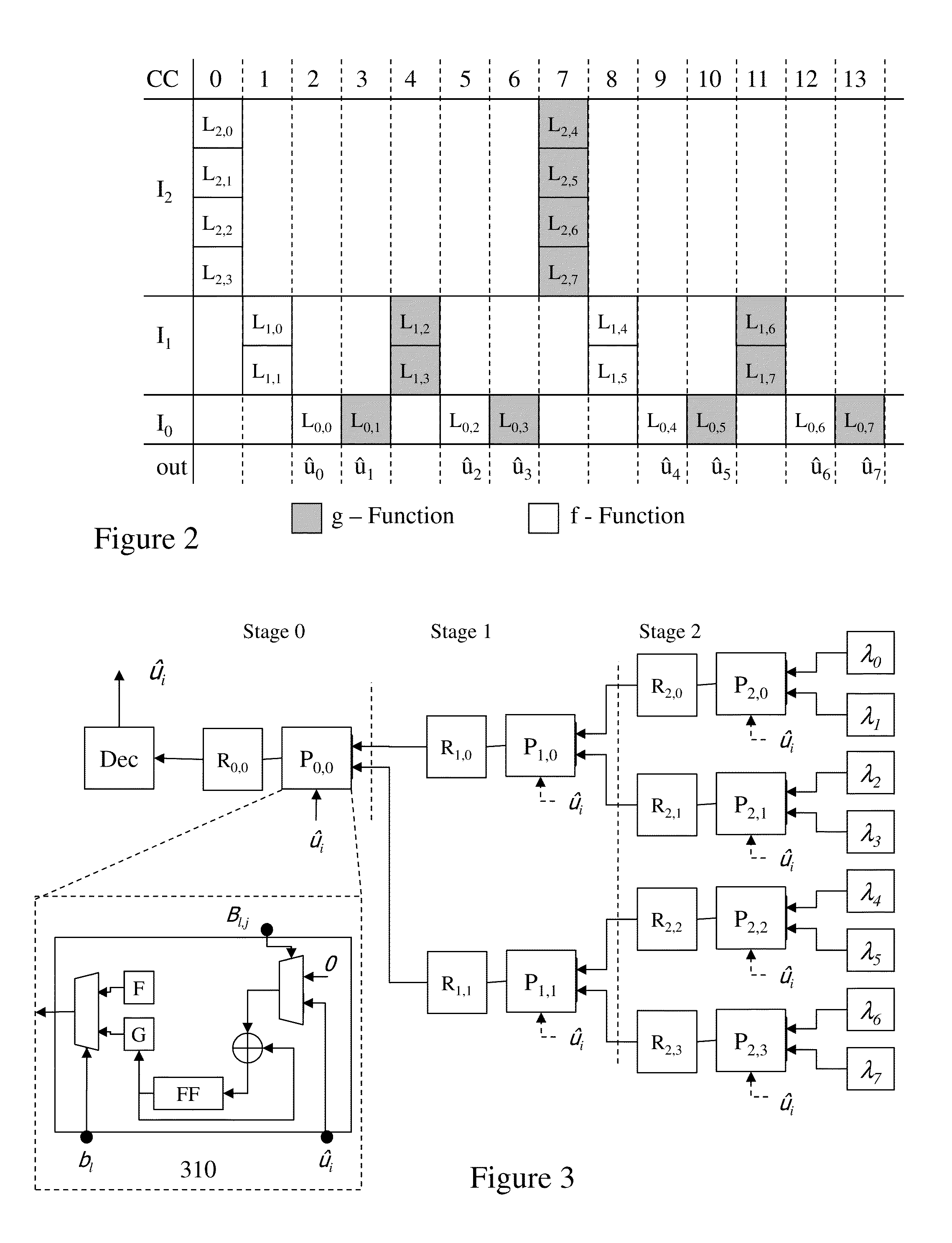Methods and Systems for Decoding Polar Codes
a technology of polar codes and methods, applied in the field of polar codes, can solve the problems of data compression either lossless or lossy, incorrect data being received through decision-making processes at the receiver, and information loss, and achieve the effect of improving the performance of decoders
- Summary
- Abstract
- Description
- Claims
- Application Information
AI Technical Summary
Benefits of technology
Problems solved by technology
Method used
Image
Examples
Embodiment Construction
[0060]The present invention is directed to polar codes and more specifically to implementing and improving the performance of decoders for polar codes.
[0061]The ensuing description provides exemplary embodiment(s) only, and is not intended to limit the scope, applicability or configuration of the disclosure. Rather, the ensuing description of the exemplary embodiment(s) will provide those skilled in the art with an enabling description for implementing an exemplary embodiment. It being understood that various changes may be made in the function and arrangement of elements without departing from the spirit and scope as set forth in the appended claims.
[0062]1: Polar Codes
[0063]A polar code is a linear block error-correcting code designed for a specific discrete-input, memoryless channel. Such codes may be used in forward error correction (FEC) and applied to transmitting data on a communications channel such that errors in the communication can be corrected and / or detected by the rec...
PUM
 Login to View More
Login to View More Abstract
Description
Claims
Application Information
 Login to View More
Login to View More - R&D
- Intellectual Property
- Life Sciences
- Materials
- Tech Scout
- Unparalleled Data Quality
- Higher Quality Content
- 60% Fewer Hallucinations
Browse by: Latest US Patents, China's latest patents, Technical Efficacy Thesaurus, Application Domain, Technology Topic, Popular Technical Reports.
© 2025 PatSnap. All rights reserved.Legal|Privacy policy|Modern Slavery Act Transparency Statement|Sitemap|About US| Contact US: help@patsnap.com



